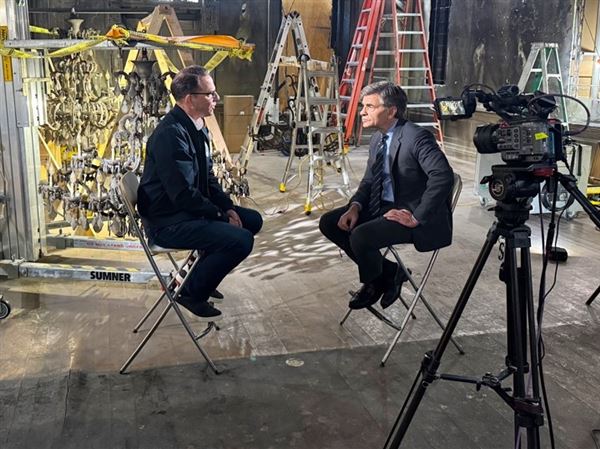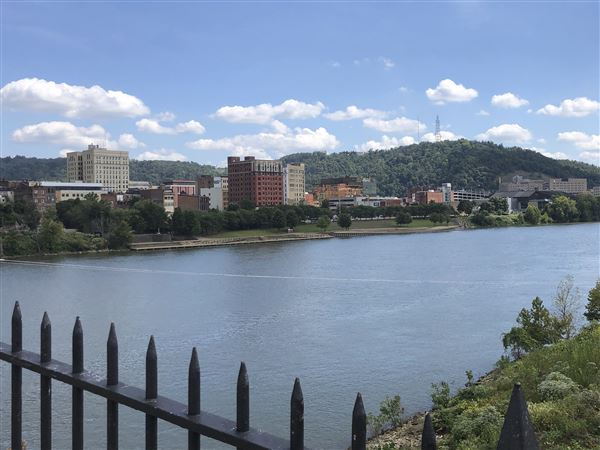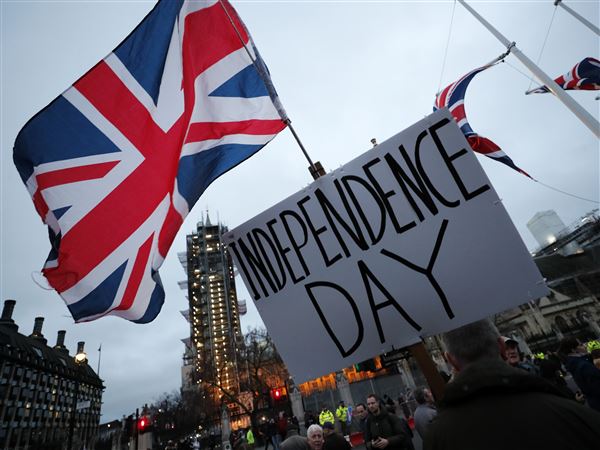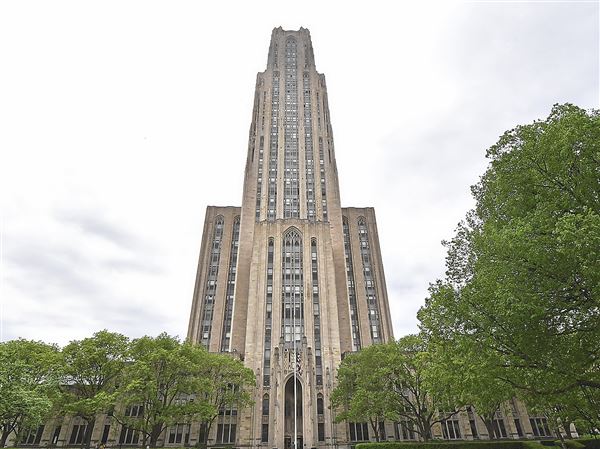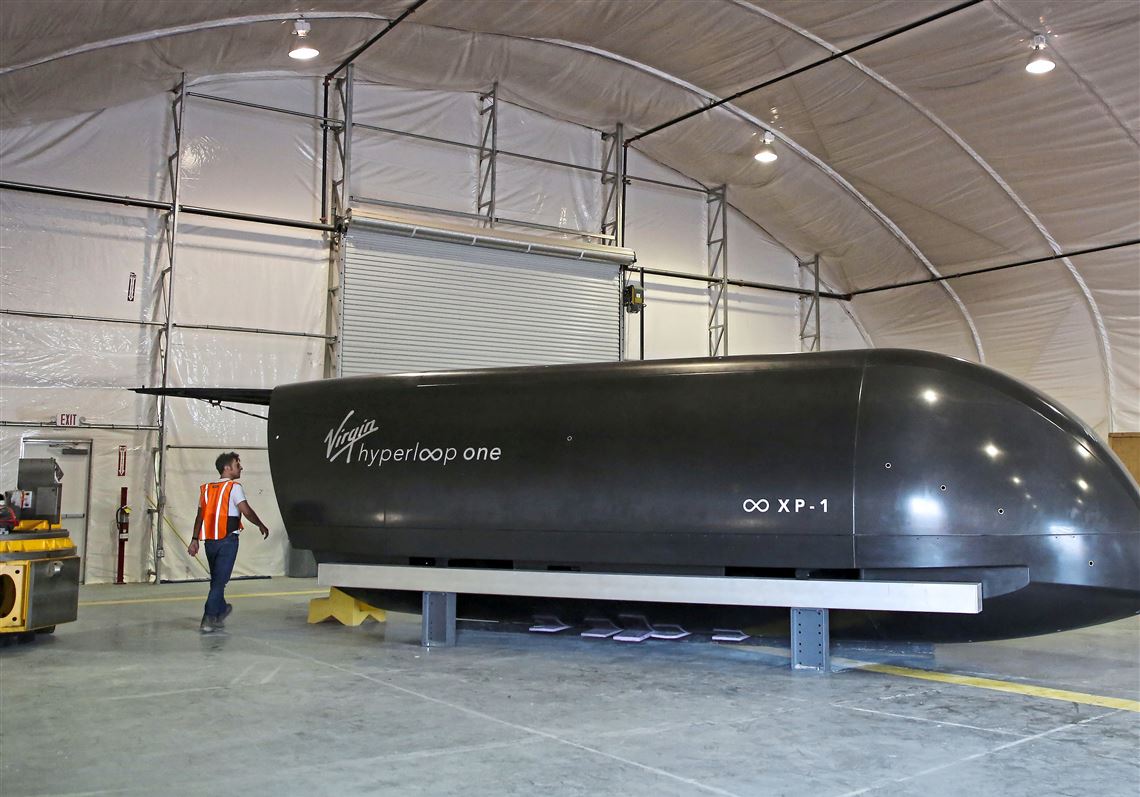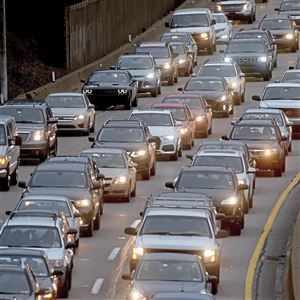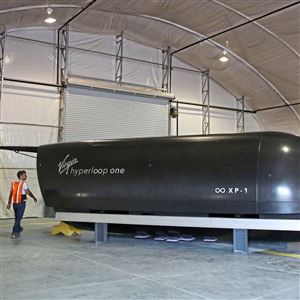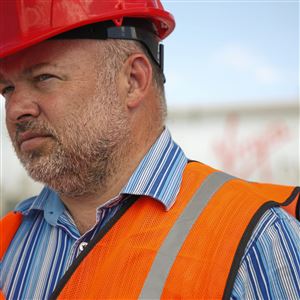Officials from Virgin Hyperloop One and the Mid-Ohio Regional Planning Commission are in Pittsburgh this week to brief local officials on the progress of plans to send people and freight from Pittsburgh to Chicago in 48 minutes in low-pressure tubes.
The planning commission awarded two contracts last month, one to AECOM to study the feasibility of installing a hyperloop to connect the two cities by way of Columbus and the second to WSP USA for a preliminary environmental impact study. Virgin Hyperloop One authorized the Mid-Ohio proposal, dubbed Midwest Connect, as one of 10 projects around the world to move forward with potential hyperloop systems and it is the only one doing feasibility and environmental studies at the same time.
The system works by eliminating friction in the tubes by removing air, a technology similar to the pneumatic tubes used at bank drive-in windows. People would sit in pods that can travel up to 500 mph and be available on demand.
Virgin Hyperloop has the only working test track for the technology, in the desert outside Las Vegas, and expects to build its first commercial system between Mumbai and Pune in India early in the next decade, Dan Katz, the company’s director of global public policy and North American Projects, said Tuesday. That’s because the Mumbai project is farther along in planning and has the money to pay for it.
But it is important to have other projects ready once the Mumbai system is operational, Mr. Katz said.
“We know it’s a long process, but the hope is to have it operational in India in the early 2020s,” he said. “I think by studying this [Chicago to Pittsburgh corridor] now… when the technology is fully ready, this project will be ready to move ahead.
“We want things to move quickly. It’s not going to be a consecutive process. Once we get the first one up, it will be a concurrent process.”
Engineers are perfecting the control system to allow the maximum amount of passengers and freight to use the hyperloop, Mr. Katz said. Most likely, freight would be moved overnight when there is low passenger demand.
Thea Walsh, the commission’s director of transportation and funding, said the feasibility study for Midwest Connect will take about nine months and the environmental study a year. The potential corridor would follow mostly rail rights-of-way and have stations 30 to 40 miles apart, including in the three main cities, she said.
Once the studies are done, the next step would be to determine the cost — for construction and for travelers — and the availability of funding. The commission is convinced the technology will work, but it’s an open question whether it can be delivered at an affordable price for riders.
“We don’t know that yet,” Ms. Walsh said. “There’s a lot of promise, but there’s nothing specific for our corridor yet.”
Mr. Katz and William Murdock, the commission’s executive director, also participated in the 2018 Pittsburgh Energy Forum Series Tuesday evening at the Heinz History Center sponsored by the Pittsburgh Post-Gazette and Peoples Natural Gas.
Ed Blazina: eblazina@post-gazette.com, 412-263-1470 or on Twitter @EdBlazina.
First Published: July 18, 2018, 3:54 a.m.

